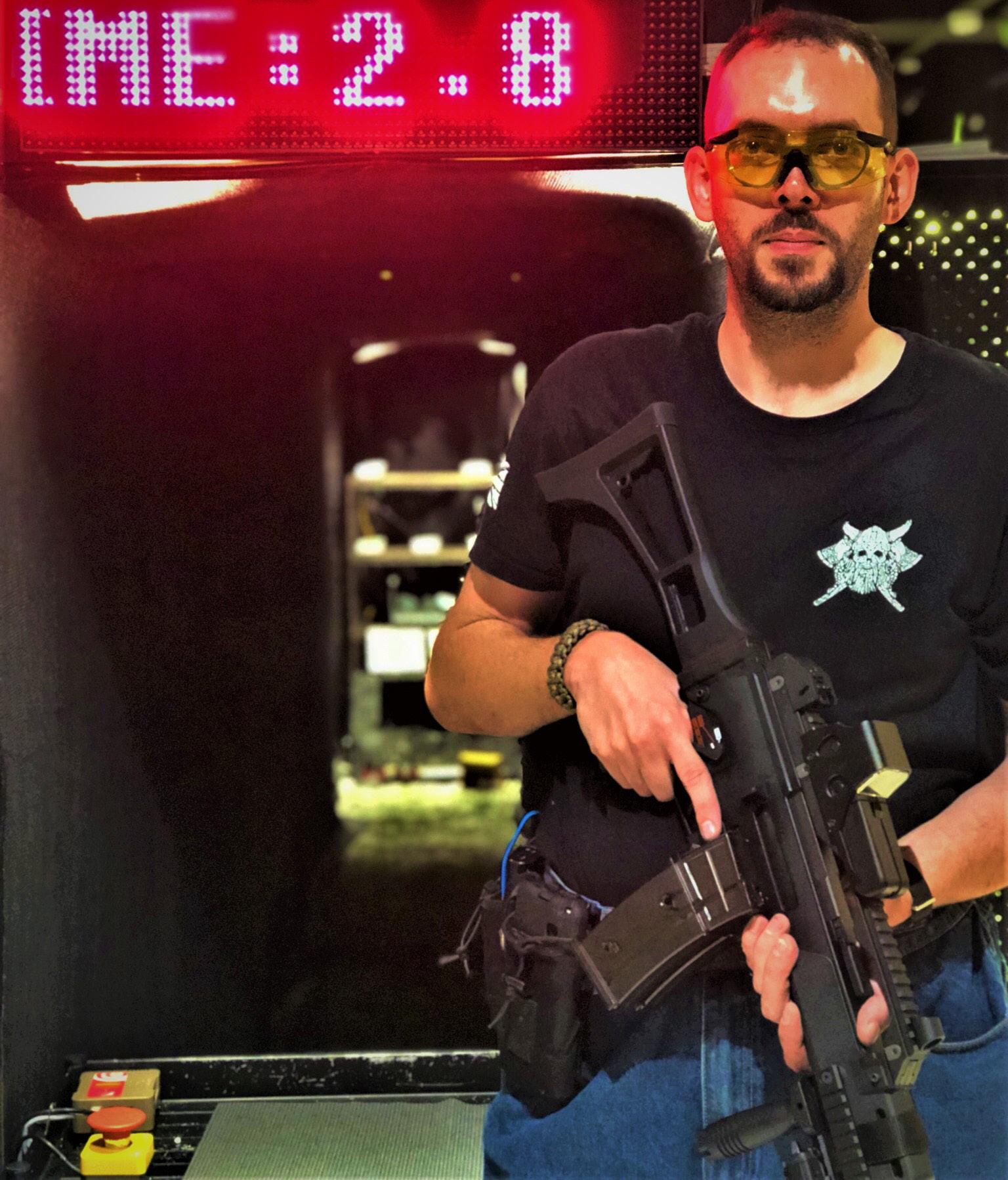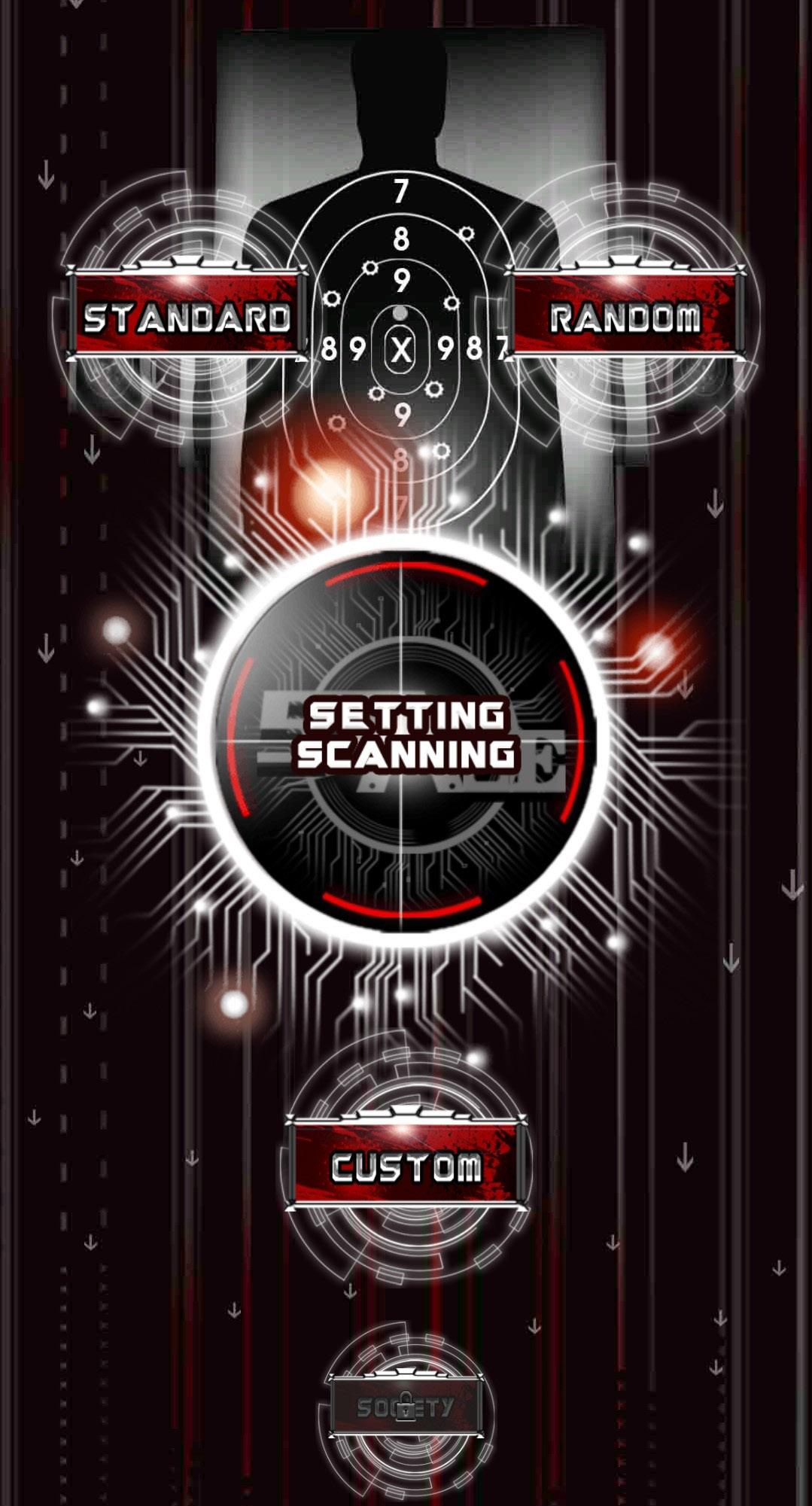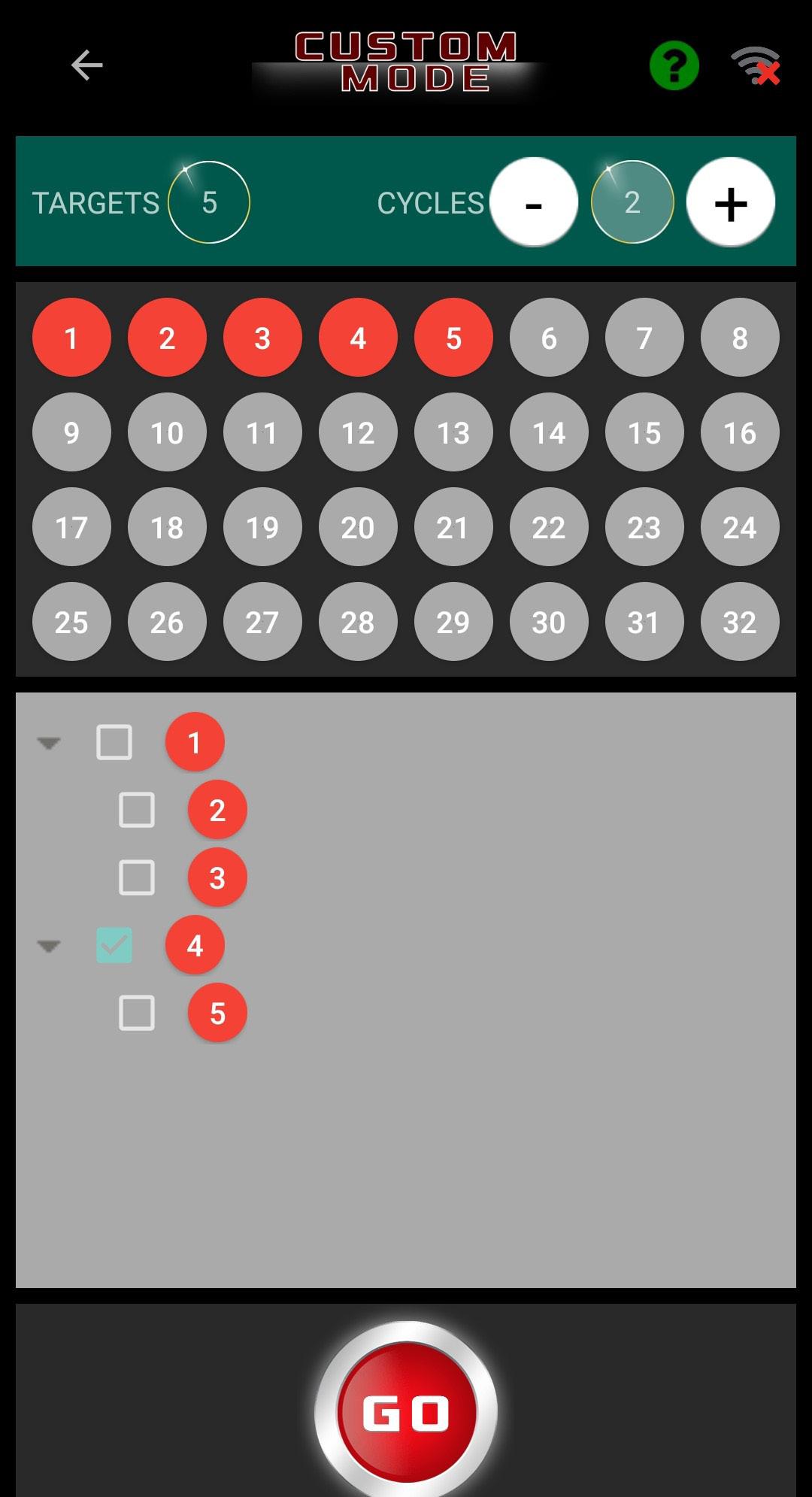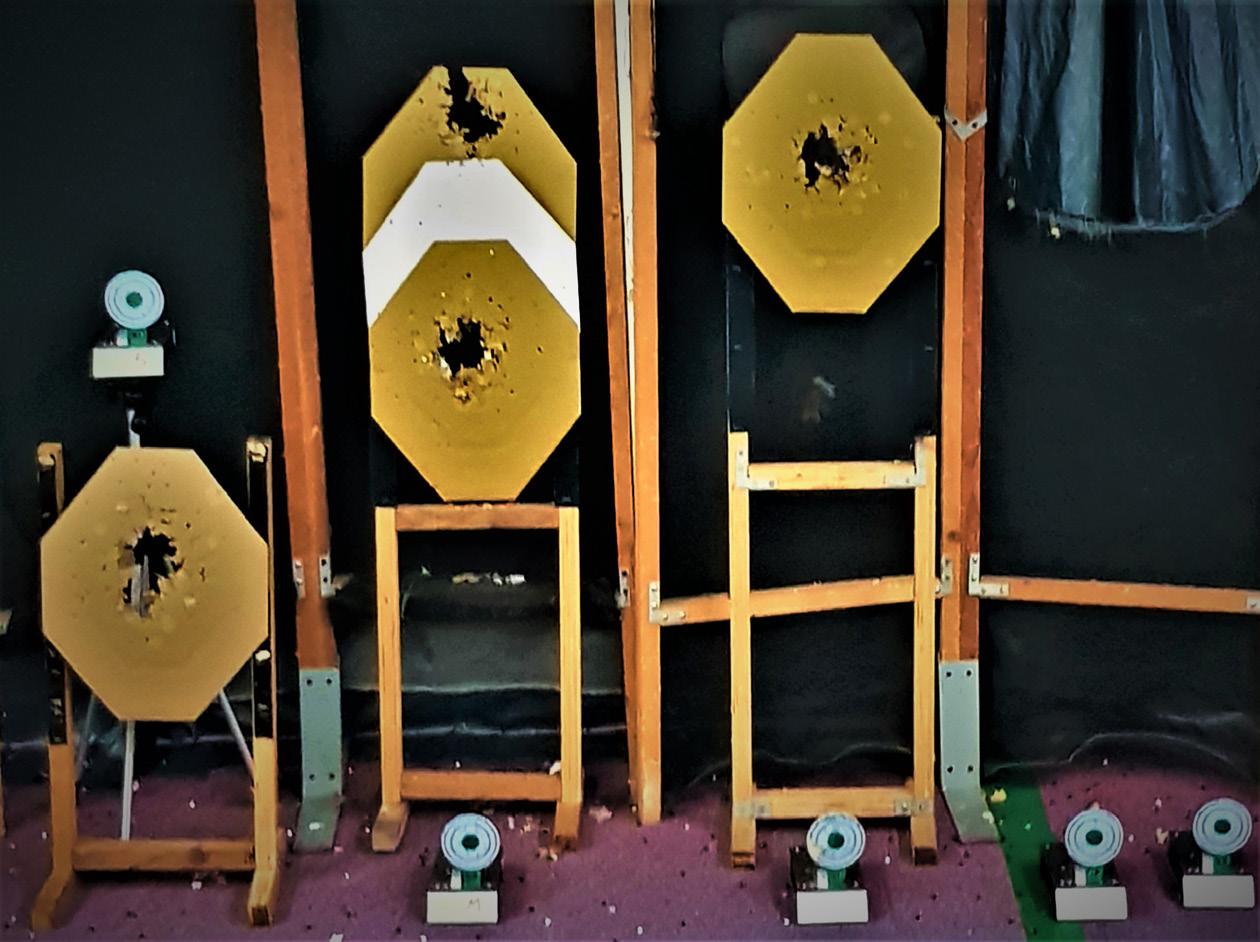
14 minute read
FEATURE: STAGE ETS
TMC STAGE ELECTRONIC TRAINING SYSTEM
WHILE NOT EVERYONE HAS ACCESS TO AN RANGE, BEING ABLE TO PRACTICE YOUR SKILLS IS EVERY SERIOUS AIRSOFTER’S IDEAL SCENARIO, ESPECIALLY IF IT ALSO PROVIDES BOTH CHALLENGES AND INSTANT FEEDBACK. STEWBACCA REPORTS FROM TAIWAN, WHERE A PARTICULAR SYSTEM ATTRACTED MORE THAN JUST HIS PASSING ATTENTION…

When I arrived in Taiwan back in summer 2017, I began searching out local airsoft shops and gaming sites almost immediately, as well as attending the 22nd Hooha Show within a few weeks of arriving and the first MOA show just before my first Christmas here. Happening upon my local KUI Airsoft store in Zhubei (where my first teaching posting was), north of Hsinchu, one of the larger stores in their chain which has shops in every major city on the island, I was very interested to see that they had an in-store firing range positioned as soon as you entered through the main doors, created in the space between the two rows of display cabinets. At the end was a local Taiwanese-produced XCortech electronic target system, consisting of a control box at the firing point, with ethernet cables running to the target end connected to an array of circular target plates mounted on motorised boxes. These would lift on command and register when they were shot down, as well as providing green or red LED uplighting for shoot/no-shoot target modes.
KUI would become a regular haunt of mine after hours, with me spending many Wednesday evenings there after getting off work, or whichever weekend day I happened to not be actively gaming. I’d hang out there and chat with the store operator Ben, while he helped sell me or service my ever-growing collection of GBB pistols, SMGs and carbines, as well as indoctrinating my colleagues into airsoft and testing out their new guns too. I would naturally gravitate towards running all of my various guns against the clock on their XCortech range, to the point where I wore out some of them and apparently the targets too! I did at least set a speed record for 2.8 seconds on 5 targets with my WE G36C, which I believe still stands and apparently my photo still adorns their range - fame and glory clearly await me!
Fast forward two years and I was moving to Taipei

and began missing out on the social and race gun aspect of KUI Zhubei - the local Taipei store being much less readily accessible and also a smaller affair without the same firing range facilities - so my record breaking attempts fell by the wayside and I was reliant on live skirmishing to uphold my handling and marksmanship.

EN VOGUE
Around the same time I began seeing an increase in interest and market solutions for consumer target and tracking systems. I had contemplated the XCortech system KUI had but it seemed a bit prohibitive at around NTD$10,000-12,000 (about GBP £250) for a setup, as well as it being somewhat static and requiring all of the physical wiring and available space and supporting structures to make use of it.
Back in the UK the likes of AttackSense targets seemed to be gaining popularity and at MOA 2019 my colleague and teammate, Kiran, had tried out a new European-based target system that ran off a phone or tablet app in a similar manner. Acetech also had similar static and even moving target systems and Rare Arms were making use of a projector system and laser training unit attached to their new shell-ejecting AR hybrid platform to allow users to try out both their gun and a virtual firing range system. Running and gunning against the clock and, potentially, your friends or peers with cloud enabled ranking capabilities within some of the apps was the new en vogue “thing”.
I’d also seen TMC’s adverts featuring their TRN tactical girls running guns against their own upcoming offering in a similar vein, so I waited with bated breath for the release of that system as it offered a different aspect to some of the others: minimal infrastructure and modularity.
Eventually, back in October 2020 I got my hands on the released units after visiting Shawn and Eric at TMC Taipei, initially buying three units… one “master” and two “slave” setups. The master communicates through WiFi with both your phone or tablet device to relay timing information to the “STAGE” training APP on your device, as well as control and relay commands from the slave units associated to it. Additional units can be purchased later to increase your collection and capabilities. Shawn has ten of his own for his pistol and rifle drills and I have thus far added a further two units to bring my total to five, enough to use in conjunction with paper or other static targets to create Action Air stages, or training drill scenarios to test my speed, accuracy and improvement over time.
CHANNEL YOUR TRAINING
Each “master” unit has the capability to run up to 32 individual targets on each one of its 8 programmable channels, which are controlled by three slider switches on the rear of the unit. Once you acquire a set, simply switch all of the units to the same combination of the three switches as the master unit to slave them to that channel. When you use the APP on your phone you can scan for the WiFi ID of your master unit, connect to it and then scan for additional slaved target units and establish them to that channel. You can then check their battery life status and even remotely lift or drop them to test their function and help you identify which target is which based upon the APP’s assigned numbers. These will stay the same every time after the initial setup (in my experience) and I have written the corresponding numbers on mine to make it easier to form various layouts or drill stages.
With 8 separate channels you can, in theory, run up to 256 separate targets in the same area, using 8 different master units and control devices with the APP, although I don’t think they can be made to work in tandem as it stands. Certainly, for larger events or the likes of Action Air usage, you could set up very involved stages of up to 32 single targets and operate them on separate channels to allow multiple bays to operate simultaneously without interfering with each other.
In terms of the APP itself, I haven’t seen much in the way of updates thus far since I got it a year
ago, with the “community” option still greyed out. I imagine they are thinking of making it cloud compatible in the longer term to allow competition and comparison, however, it already has a few useful modes to control the targets in various manners.
OPERATING MODES

“STANDARD” mode allows you to just run the stage system and raise the targets on an audio beep cue, then shoot them down once each in any order you choose.
I tend to use this one for Action Air drill stages as normally the target sequence isn’t important or interconnected for the most part, it’s just about planning and getting the fastest time. I tend to set up a single bay with multiple paper targets and the STAGE target boxes along the floor like popper targets, and maybe use one as a standard ending plate, usually raised up on a tripod in a similar manner to the ending plates used to time all our Action Air competition stages. I then vary the drills I do and order of shooting the targets to see which movements or methods get me the fastest results and the APP allows me to track progress or individual run times with a display of target number, cumulative hit time and split times between hits. At present I just screenshot these on my phone, there doesn’t appear to be any internal logging system as yet.
“RANDOM” mode allows you to run the target system through a number of salvos of the targets in a random order; they will pop up and beep individually until all targets have been cycled through once, or however many salvos you choose, up to a maximum of ten. If you have all 32 target slots filled, that could be a serious amount of shooting in one presentation!
I have found this one is good for practical shooting scenarios the likes of which I set up in Action Bunker when I was still helping out there and had more open access to their facilities. Placing targets on the firing range I helped put together in their basement and moving from firing point to firing point while scanning for targets appearing in different places and reloading on the move until all were eliminated. Again, everything is presented on the app’s screen although not logged as such, so you have to take as many screenshots as necessary to cover the whole list of target engagement times. If you run lots of salvos you might be there a while as it stands!
“CUSTOM” mode is where things start to get more interesting!
I only have five target units, so it’s a little limited until I get more but basically the screen displays a bank of the 32 possible targets and allows you to select from them to create “primer” targets of whichever number you choose and then assign “reaction” targets to those initial ones. I haven’t had



much chance to push this functionality yet because of the limited number of targets but it seems you can assign any target as a “reaction” target to one of the “primer” targets of your choosing. Upon activation the “primer targets will raise up and beep to present themselves then, when you shoot them down, the “reaction” targets assigned to them will then pop up and beep for presentation. So, in a kind of “boss fight” scenario you could have multiple henchmen targets set up to react to the elimination of one another or create salvos of reacting targets triggered by an activator, which would suit the likes of Action Air stage design. There’s nothing stopping you from tying in the electronic activator target with a reaction target that’s released along a track or swinger, or similar setup as you would use for paper targets and a smaller moving target like this would really put your moving marksmanship to the test.
In terms of operation, the individual target units each work from either a duo of 18600 batteries (making them compatible with many weapon lights and associated batteries and chargers many shooters might already have), or if you do decide to set up a more permanent range situation, you can run standard USB micro cables to their power sockets at the rear. These same sockets allow for recharging of the batteries when the units are switched off and a small LED at the back shows steady red during charging and turns steady green upon being fully charged. However, it should be noted that you should not use external mains power and internal battery power simultaneously; if you’re setting them up for permanent external power then remove the batteries altogether. The base of each unit also has a standard tripod mounting thread insert to allow you to mount them in various manners.
I haven’t yet managed to find a training space large enough to exceed the maximum WiFi range but I imagine this will be typical for such devices, in the region of 40-50m with an unobstructed line of sight between target unit and control device. In terms of battery life, mine have usually lasted at least half a day with continuous usage, although I assume quality of batteries and external conditions such as ambient temperature might have adverse effects on such things.
POSITIVE RESULTS
During use I immediately started seeing positive results from using the TMC STAGE training system. Initially I looked into creating custom IPSC mini popper sized target units from corrugated polyurethane sheet and experimented a bit with them but found that the motors are insufficient for lifting full length examples of such things and adding extra weight beyond that of the supplied target plates might overload the

motors and cause some issues.
In spite of this I ploughed ahead with the smaller original lightweight target plates and figured it’s actually a better situation to make use of them anyway. They’re somewhat smaller than a popper’s “head” plate, so if I can get used to hitting them consistently, the larger targets of actual stages should be easier - and that seems to have been the longerterm result. Making use of the STAGE targets in mock IPSC bays, mixing paper targets at different heights
and transitioning between the electronic poppers and “dumb” paper, then ending on one of the stage targets allows me to time the whole run and the split times of the poppers at least. Using my headstrap mounted GoPro in tandem has allowed me to measure my results very well and see where my slow or inaccurate transitions between targets have been - it really is invaluable to see yourself either from first or third person view doing things retrospectively to understand where you’re going wrong and how you can improve.
As a result of all these “gadgetry-based” shenanigans I’ve definitely seen improvements in the speed and accuracy of my pistol powered handiwork on the clock. Alongside the more typical training and practice acquired at SPPT during group drill stage training that usually follows the initial hour or so of individual practice, I’ve halved my stage times compared to my snail paced beginnings and now I’m usually only a matter of seconds behind my peers. Bearing in mind I’m running iron sighted standard barreled production pistols with full stroke slides and reduced capacity magazines, all of which meaning I have to plan more reloads and don’t have the opportunity to use red dot sights. I am seriously tempted to run in both Production and Open with an appropriate variant of CZ Shadow 2 for both, just for comparison.
Durability wise, the TMC STAGE training targets have been surprisingly good. They’re pretty sturdily built in terms of the lower motorised unit and the target plates themselves are made from PCB board to keep them as light but strong as possible. After the level of abuse I’ve imparted upon them, one or two of them are fraying a little and one is quite severely shot through at this point, but having talked to Shawn these should be a consumable or replaceable part in practice and are easily unscrewed from the motor’s lifting arm and replaced. I’ve used some very heavy hitting platforms, such as my WE T91 running 12kg gas and 0.3g tracer and plain rounds against them, as well as just the sheer round count from pistols, so as usual, I wouldn’t take my typically destructive testing to paint them in a bad light, the lower units have minimal superficial damage despite also being peppered by stray rounds. I’m certainly looking forward to progressively growing my collection of them on a piece-meal basis to increase the useful training I can derive from them. In skirmishes it seems I am getting somewhat known for my double-tap and single-shot eliminations, or just the pistol skills I’ve derived from all my experiences over the years. This has no doubt been aided by the IPSC/Action Air drilling and in no small part to all the beating upon the STAGE training targets and measurable decreasing times on targets I’ve noticed in each drilling session with each novel layout I come up with! AA













